











































































































































































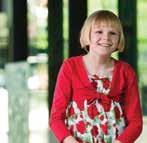



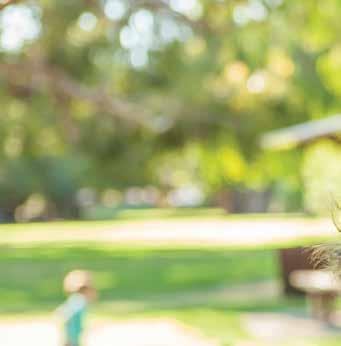
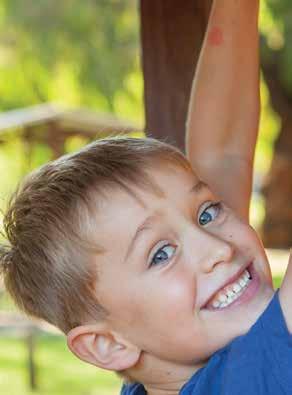
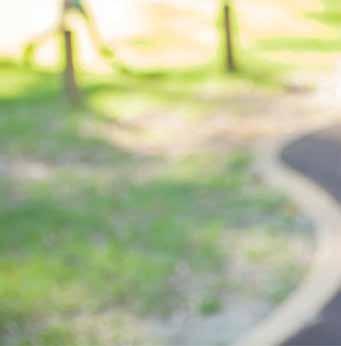
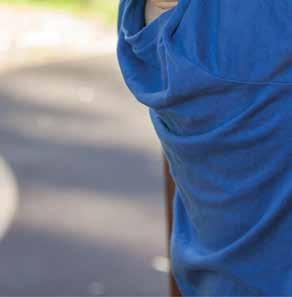
The Telethon Kids Institute is affiliated with The University of Western Australia through the Centre for Child Health Research and has strong clinical research links to Princess Margaret Hospital for Children. MESSAGE FROM THE CHAIRMAN & DIRECTOR 2 BOARD OF DIRECTORS ............................................................ 6 2014 HIGHLIGHTS ....................................................................... 8 RESEARCH FOCUS AREAS 10 SHOWCASE PROGRAMS......................................................... 12 WHO WE ARE AND WHAT WE DO 16 FINANCIALS 18
At the Telethon Kids Institute we are committed to research that makes a real difference.
And kids are at the heart of everything we do.
We want every child to have the best opportunity to enjoy a childhood with health and happiness. But too many face great challenges – disease, disability, disadvantage.
With strengths in laboratory, clinical and population health research, our 500 staff and postgraduate students work to deliver our promise to Discover. Prevent. Cure.



We know we can’t do it alone. Our Research Focus Areas are interactive, collaborative hubs overseen by Steering Committees that include researchers, community members, practitioners and service providers.
Our strong connection with our community drives what we do. It actively shapes our research agenda and helps to provide the fuel for our research engine, particularly through the generous support of Channel 7’s Telethon.
Find out more at telethonkids.org.au
ANNUAL REPORT 2014 | 1
are at the of everything we do
MESSAGE FROM THE CHAIRMAN AND DIRECTOR
In our 2013 - 2017 Strategic Plan we committed to a blueprint for a new research institute – one that embraces its community and judges itself on its ability to make a difference in that community.

In 2014, that commitment was put into action with a metaphorical pulling down of our walls and opening up of our boundaries. Through our four Research Focus Areas (RFA) we actively invited research collaborators, practitioners and community to forums and onto steering committees that now determine our research priorities.
There are now more than 600 people actively engaged through RFA mailing lists, 439 attended Forums, 227 people contributing to 13 working groups. These have already generated 22 applications for funding for new research ideas.
2 | TELETHON KIDS INSTITUTE
COLLABORATION
It is very pleasing that the collaborative hub that we imagined is now taking shape and growing in energy with great goodwill being generated between Telethon Kids researchers and all our partners. We know that this collaborative structure will help us deliver on our other commitment of ensuring that our research makes a difference. This year we have produced our first IMPACT report which provides tangible evidence of how both discovery and translational research delivers measurable outcomes. With research funding under pressure, this provides a new level of accountability and transparency.
RESEARCH EXCELLENCE
We have also looked internally to create structures to build the culture of research excellence. A new Scientific Advisory Council has been appointed that includes nationally eminent scientists alongside our own senior researchers. In 2015 a Research Excellence Council is being formed to create a program of discussion around initiatives to raise research quality.
In the past year Telethon Kids has performed well in competitive funding rounds, being awarded National Health and Medical Research Council (NHMRC) Centres for Research Excellence in Diabetes and Rheumatic Heart Disease. Five of our up and coming researchers were awarded prestigious Early Career Fellowships and five of them also gained highly-competitive NHMRC project grants which is a very positive sign for the future of the organisation.
PEOPLE
The continued development of our research and professional staff is a high priority. Implementation of our People Strategy included the appointment of People Leaders and Career Managers as additional supports to staff and a revamped performance review program. We will be continuing to revise this during 2015, but overall it is great to have a structured program in place to help people manage their careers.
Importantly, we have also implemented clear processes for Promotions and Salary Support for researchers who require interim funding between grants along with a Fellowship Support Policy that recognises and rewards our high performers.
COMMUNITY
Our recognition in the community has grown significantly after our re-brand and marketing strategy which included the rollout of our first mass media campaign. Thank you to our senior researchers who participated in the commercials with a great degree of good humour. Market research shows that our unprompted and prompted brand awareness and positive sentiment towards the Institute has shown solid growth and we look forward to building on that awareness and demonstrating better to the community the value of the investment in medical research.
ANNUAL REPORT 2014 | 3
FUNDING
One upside of all this research activity and awareness is the increased support from our philanthropic partners. We were very grateful to be the beneficiary of BHP Billiton’s donation to Telethon of $20m over five years. It is a wonderful strategic partnership that is underpinning our transformation into the research institute of the future. It will also fund an important initiative in the Pilbara to work with communities to reduce drinking in pregnancy. We look forward to reporting on the outcomes of that unprecedented support from BHP Billiton in the years to come.
The ongoing support from Wesfarmers for the Wesfarmers Centre for Vaccines and Infectious Diseases is paying dividends with 25% of all UWA NHMRC funding awarded to our researchers and collaborators in 2014. This included 10 new competitive project grants, 2 NHMRC Centres of Research excellence and five research fellowships for early/ mid-career researchers. This is a wonderful example of how funding of this kind builds critical mass and allows us to leverage that support even further.
We are very grateful to all our donors and funders who partner with us in our vision to improve the health and wellbeing of children. Their stories are featured in our new Spectrum report which highlights the power of their philanthropic gifts.
The Institute’s financial position has continued to enjoy modest, sustained growth. We ended the 2014 financial year with a surplus of $1.3 million which
was allocated to the Institute’s cash and investment reserves. Our strategic focus on business development (philanthropy, corporate partnerships, interest on investments, commercialisation etc.) in the past few years has resulted in significant growth in non-research income. This has grown from $3.87 million in 2010 to $19.8 million in 2014.
The Institute has developed a plan to achieve long term sustainability that includes strategies to achieve improved cost efficiency, increased business development and full costing of research.
MEDICAL RESEARCH FUTURE FUND
The Federal Government’s commitment to establish a $20B Medical Research Future Fund (MRFF) is a much needed boost to the sector. With competition for NHMRC funding increasing, and success rates falling, many outstanding research proposals miss out on funding. The result is a delay in finding new treatments and cures. The MRFF deserves broad support and we are hopeful that we will see the dividends from this endowment flow sooner rather than later.
NEW BUILDING
The Institute’s planned move to the new Perth Children’s Hospital has also experienced delays. In addition to the delays with the building completion, we took the decision early in 2015 to put the internal fitout of our facility out to tender, rather than proceed with the fitout proposal from the State’s Master Contractor on the project. We believe
4 | TELETHON KIDS INSTITUTE
this decision will secure best value for our budget and deliver a state of the art facility that we all expect. It is anticipated that the relocation will now happen in the second half of 2016.
OUR THANKS

It is with a mixture of excitement and sadness that we farewelled Professor Anne Kelso from our Board after eight years of service. We are thrilled that Anne has been appointed as the new CEO of the NHMRC and know that she is a wonderful research leader and advocate. We wish her every success in her new role.
The Institute’s Board of Directors once again contributed their time generously in assisting on the many matters we are managing and we thank them for doing
so along with the all members of staff for their commitment to the Institute’s success.
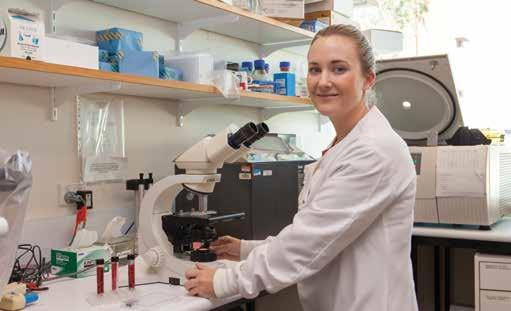
Our final thanks has to go to Channel 7’s Telethon and its Chair Mr Kerry Stokes. Telethon’s continued fundraising success and profile underpins all that we do. Importantly it connects us as a research institute with our community in a way that only happens here in Western Australia. We are grateful to the Trustees and the Telethon team for their commitment to improving the health and wellbeing of children and in return pledge our commitment to excellence in research that makes a real difference to kids here in WA and beyond.
John Langoulant CHAIRMAN
 DIRECTOR
DIRECTOR
ANNUAL REPORT 2014 | 5
Jonathan Carapetis
BOARD OF DIRECTORS
Our Board of Directors all give their time voluntarily and work together to guide the overall business of the Institute, bringing a diverse range of experience from the business, academic and community sectors. We are extremely grateful for their dedication and the governance they provide us.
Former Chief Executive, Oakajee Port and Rail and Crosslands Resources Pty Ltd; Chair of the Board, Western Australian Ballet; Chair of the Board, Committee for Perth; Board Member, Council of Australian Governments (COAG) Reform Council; Chairman, Leadership WA; Chairman, Government Employees Superannuation Board; Chairman, Dampier to Bunbury Pipeline; Member of the Board, CCIWA; Chairman, Western Australia Westpac Bank.



Director, Telethon Kids Institute; Member, Western Australian Immunisation Strategy Implementation Steering Committee; Chair, Clinical Advisory Group, WA RHD Control Program; Member, WA State Health Research Advisory Council; Member, One Disease at a Time Board; Member, Program Management Committee, RHD Australia; Member, National Committee for Medicine, Australian Academy of Science; Member, WA Youth Justice Board.
Former Managing Partner, Ernst & Young Western Region; Fellow, Australian Institute of Company Directors; Fellow, Institute of Chartered Accountants Australia; Fellow, Financial Services Institute of Australasia; Board Member, West Australian Symphony Orchestra; Director, Atlas Iron Limited; Deputy Chair, WA Metropolitan Redevelopment Authority; Chairman, Sirius Resources NL; Non-Executive, NRW Holdings Ltd; Chairman, Pura Vida Energy Limited.
CEO, Kariyarra Mugarinya Development; Director and Principal Consultant, Claypan Services Pty Ltd; Director, Indigenous Business Australia Asset Management Pty Ltd; Graduate, Australian Institute of Company Directors; Member, Pilyparra Ngurrara Working Group.

6 | TELETHON KIDS INSTITUTE
JOHN LANGOULANT AO (CHAIR)
JONATHAN CARAPETIS
JEFF DOWLING
KATE GEORGE
Director, World Health Organization Collaborating Centre for Reference and Research on Influenza; Honorary Professorial Fellow, The University of Melbourne; Member, Council of the National Health and Medical Research Council; Member of Board of Trustees, International Society for Influenza and other Respiratory Diseases; Board Member, Florey Institute of Neuroscience and Mental Health.
Retired from the Board in March 2015.
Executive Chairman, Patersons Securities Limited; Chairman, Patersons Asset Management; ASIC Market Disciplinary Panel Member.
Director, CEO & CoFounder, Gerard Daniels; Member, Australian Institute of Company Directors; Director, Duke of Edinburgh Award WA.



Board Member, Brightwater Group Inc; Board Member, Access Housing Association; Former WA State Health Minister; Former WA Attorney General.

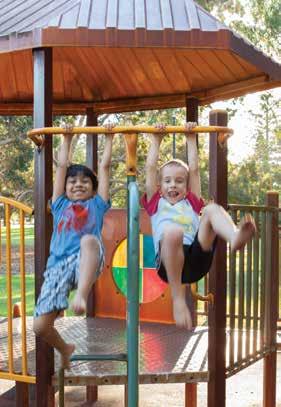
Deputy Vice-Chancellor (Research), The University of Western Australia; Member, Australian Astronomical Observatory Advisory Committee; Member, International Centre for Radio Astronomy Research Board; Member, National eResearch Collaboration Tools and Resources Project Board; Board Member, Astronomy Australia Limited; Board Member, Population Health Research Network; Member, National Committee for Information and Communication Sciences, Member, Australia Telescope Steering Committee; Member, EMBL-Australia Council.

Executive Chairman, Dacian Gold Limited; Former CEO and Managing Director, Avoca Resources Ltd; Non-Executive Director, Alacer Gold Corp.

ANNUAL REPORT 2014 | 7
ANNE KELSO AO
MICHAEL MANFORD
MICHAEL MC ANEARNEY
JIM MC GINTY AM
ROBYN OWENS
ROHAN WILLIAMS
In a major Trans-Tasman partnership between Telethon Kids Institute, University of Auckland and the Murdoch Children’s Research Institute, researchers began a comprehensive project into vaccines aimed at tackling rheumatic fever, rheumatic heart disease and a range of serious infections caused by the bacterium group A streptococcus.
$1.4M
We were awarded $1.4M from the NHMRC to tackle FASD in youth detention by determining how many juvenile offenders have FASD, and develop a FASD screening tool and management strategies.
In the largest international study of its kind, we showed a significant association between kids diagnosed with severe ADHD and higher rates of early childhood hospital admissions.
Research findings showed that having a positive friend is a protective factor for those Aboriginal young people living in high risk family environments.
Results from our LOOKING at Language study confirmed the widely held belief that twins start to talk later than single-born children and that language delay is more common in identical twins than nonidentical twins.
Our research showed a link between low vitamin D during pregnancy and post-natal depression.
With Murdoch University, we launched a new study looking at maternity services support for Aboriginal women during pregnancy and birthing
We changed our name to Telethon Kids Institute to reflect our bold new blueprint for child health research in WA.
We announced six Showcase Projects which demonstrate our commitment to collaboration and delivering real outcomes. Read more on page 12.
Lotterywest awarded us a $670,126 grant to upgrade our information technology infrastructure.
Our research showed the rate of childhood type 1 diabetes was twice as high in the south of Western Australian than in the north.
We showed that kids have a 13% higher risk of being overweight or obese if they have an overprotective mum.
We celebrated Ependymoma Awareness Day with Ethan Davies and his family.
We launched a new study looking at the reasons why women are delaying pregnancy well into their thirties
We were part of research out of the Northern Territory that outlined the efficacy, feasibility and benefits of a new, non-infection treatment for skin sores.
Research results looking at receptive language (the ability to derive meaning from words) showed a high degree of variability highlighting the need for ongoing monitoring over time.
Research results revealed that children and youth treated for ADHD are more likely to come into contact with the juvenile justice system
8 | TELETHON KIDS INSTITUTE
2014
Along with other medical research institutes, we welcomed the Federal Government announcement of a $20B Medical Research Future Fund
New results uncovered links between the mothers’ vitamin D levels during early pregnancy and the long term impact on their child’s development, specifically language development, eating disorders and lung health.
With the School of Indigenous Studies at UWA, we will formally evaluate a range of existing Indigenous suicide prevention programs and services to enable the development of a much-needed evidence base for ‘what works’ in Indigenous suicide prevention.
We were part of an international study that found that genetic factors contribute to the development of language during infancy
With the Harry Perkins Institute of Medical Research, we found that small regular doses of sunlight suppress the development of obesity.
In the largest donation in Telethon history, BHP Billiton committed $20 million over the next five years to the Telethon Kids Institute to improve the health and wellbeing of children in Western Australia.
$20B $11M $20M
Our researchers were awarded almost $50,000 from the Medibank Health Research Fund for a study to develop and pilot a survey tool to monitor women’s perspectives of public maternity services.
Our researchers were awarded more than $11M in research grants from the NHMRC including two Centres of Research Excellence, five Early Career Fellowships and five Project Grants.
We launched a new program trial aimed at guiding and supporting plus-size mums-to-be through a safe and healthy pregnancy.
Our researchers were awarded grants from the WA State Government’s FutureHealth WA initiative
A study looking at the long term impacts of early lung infections in young kids with cystic fibrosis recommended changes to monitoring techniques to help improve lung health
We showed an association between ADHD and heightened stress levels on families and smoking during pregnancy.
We showed that a short time interval between pregnancies may be less of a risk factor for preterm birth and low birth weight than previously thought.
New research showed that stopping breastfeeding and introducing formula milk before babies reach six months of age is linked to an increased risk of being overweight or obese in adulthood.
New research showed that children born to older mothers fare well when it comes to behaviour.
ANNUAL REPORT 2014 | 9
Find out more at telethonkids.org.au
RESEARCH FOCUS AREAS
Our Research Focus Areas are collaborative networks that bring together Telethon Kids researchers with external researchers, health services and consumers to ensure our research is translated into real outcomes for children. They facilitate the development, delivery and translation of high quality collaborative projects that make a difference to child health.
In 2014, across all four RFAs:
227 people contributed to 13 Working Groups
51 people were on 4 RFA Steering Committees
Find out more at telethonkids.org.au
ABORIGINAL HEALTH
The health and wellbeing of Aboriginal children and families is a priority at the Telethon Kids Institute.

There are specific cultural, social and economic contexts that require more specialised investigation in collaboration and consultation with Aboriginal families - and there are health issues that disproportionately affect Aboriginal people. This collaborative way of working will provide models that can be applied to other vulnerable populations in Australia and globally.
In 2014 the Aboriginal Health RFA had:
119 people on mailing lists
128 people attending RFA forums in 2014
10 | TELETHON KIDS INSTITUTE
BRAIN AND BEHAVIOUR
Brain and behaviour is at the core of many issues affecting the health and wellbeing of kids. This research encompasses a child’s learning, development and mental health - and the impact of conditions like cerebral palsy, autism and intellectual disability.
Our research investigates the developmental, genetic, family and environmental determinants of child wellbeing, and how clinical, educational and community practices can provide every child with the best start.
EARLY ENVIRONMENT
The influence of the early environment starts from before a child is even conceived - that’s why we also need to care about the health and wellbeing of prospective parents.
Factors including infection, climate, nutrition and physical activity, sunlight, the built environment, pollutants and the complex range of bacteria living in and around us, all can have an impact.
Understanding these exposures and their impact on children is key to preventing and treating common, chronic childhood conditions.
CHRONIC DISEASES
Chronic diseases in children require very different investigation and treatment to similar conditions in adults.
Childhood cancers, diabetes, lung and heart diseases are debilitating and often life threatening. Effective treatment and prevention requires a comprehensive understanding of genetic and environmental factors. Our focus is on better ways of diagnosing, treating and controlling disease in individual kids as well as reducing these diseases in the population.
In 2014 the Brain & Behaviour RFA had:
90 people on mailing lists
191 people attending RFA forums in 2014
In 2014 the Early Environment RFA had:
115 people on mailing lists
110 people attending RFA forums in 2014
In 2014 the Chronic Diseases RFA had:
218 people on mailing lists
100 people attending RFA forums in 2014
ANNUAL REPORT 2014 | 11
SHOWCASE PROGRAMS
Our showcase programs are a demonstration of how we at the Telethon Kids Institute are committed to a new way of working. One that’s highly collaborative, involves the community, and pledges to deliver real outcomes within a defined period of time. It’s about working across disciplines and with people outside the research sector -- those in policy, practice and the families who care for kids.
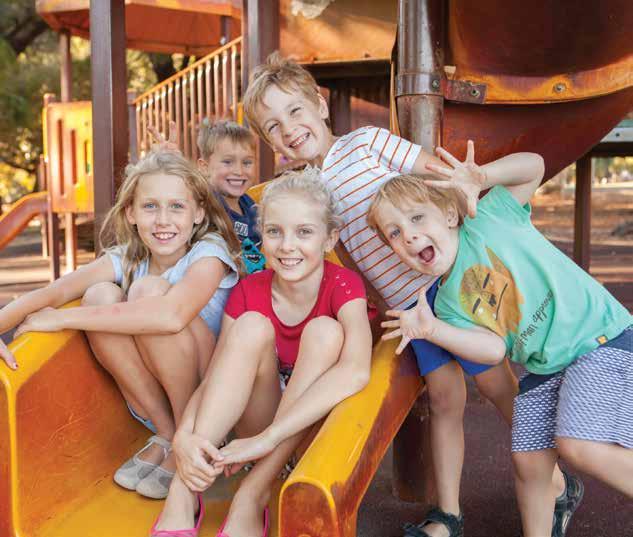
12 | TELETHON KIDS INSTITUTE
Find out more at telethonkids.org.au
AREST CF
The AREST CF initiative focusses on the assessment, treatment and prevention of Cystic Fibrosis lung disease in children from diagnosis by newborn screening to seven years of age. Our work is focused on identifying the key drivers of lung disease in the first 5 years of life, and targets for intervention. We believe that preventing lung damage in early childhood is the best strategy for reducing the impact of lung damage in adult life and improving the lives of patients.
OUR GOAL
Extend life expectancy and quality of life by preventing early lung disease in children with CF
We are collaborating with a US-based biotech company to test a novel device to improve the delivery of drugs in the lung. If successful, this device can be used to improve the way current therapies are administered to kids meaning less time on nebulizers and reduced disruption to normal daily activities. Research is also underway to discover novel interventions to target either the inflammatory responses in the lung or correct a genetic change that occurs with Cystic Fibrosis.
Our work has already changed the current practice of managing CF disease progression; however we think we can do better. In the coming year we engage with treatment centres in Australia and with the wider Cystic Fibrosis community, with the goal of incorporating evidence-based guidelines into a consensus standard of care for kids with cystic fibrosis. We will use this opportunity to also identify and prioritise the research gaps relevant to making a difference to kids with cystic fibrosis.
CHILDREN’S CANCER
Our work to improve the survival and quality of life for kids with cancer has focused on identifying new drugs for use in kids cancer clinics. We have done this by working as a part of a global cooperative of scientists that shares data and results to build a worldwide database of which drugs work best to treat different types of cancer. This work has enabled us to support clinicians to tailor treatments that are as unique as the kids they are treating.
OUR GOAL
Discover new therapies to fight the most aggressive cancers in children
As well as working with experts from around the world we work with local oncologists, radiologists, physicists, chemists, pharmacists, surgeons, molecular biologists, bioinformaticians, protein chemists and immunologists to conduct preclinical testing of cancer therapies that will improve outcomes for kids in the clinic. We were thrilled to be part of a group Perth based researchers that worked with BHP Billiton to bring the first X-RAD platform to Australia. This cutting edge technology will enable us to work to improve radiation therapy outcomes for less common, but more serious cancers like brain tumours in kids.
ANNUAL REPORT 2014 | 13
DIABETES
Our work in leading the Centre for Improving the Lives of Young People with Type 1 Diabetes Using State-of-the-Art Therapies in 2014 has provided the resources to bring together our own expertise in the clinical treatment of diabetes along with experts in a wide range of disciplines such as health economics, pump therapies, exercise physiology and psychology.
OUR GOAL
New therapies that improve the lives of children and young people with Type 1 diabetes
This work has enabled us to lead the introduction of pump therapy to Australia and be the first group to demonstrate the feasibility and effectiveness of a portable closed loop artificial pancreas system in Type 1 Diabetes. Our work has also been incorporated in published guidelines related to methods to evaluate glucose requirements in exercise, which will help guide exercise therapy outcomes.
We have worked with kids and families to shape our research direction and in the future will be focusing on improving outcomes by looking at not only how control of blood glucose levels in Type 1 Diabetes can be improved with technology and exercise but also how these interventions can reduce the burden of care associated with disease. We will also seek to understand the mental health aspects of the disease and collaborate with world leading experts to improve outcomes for kids.
D-LIGHT
Many people are confused about how much sun they should get, and whether or not a vitamin D supplement is enough to replace a lack of sun exposure – we want to clear things up. We work closely with Cancer Council WA and other Cancer Councils in Australia to focus on the risks and benefits of sun exposure. We work across many different disciplines including immunology, epidemiology, exercise science, nutrition, environmental monitoring, neurology, endocrinology and clinical biochemistry develop answers to a seemingly simple, but puzzling complex questionHow much sun exposure is required for optimal health?
OUR GOAL
To provide the evidence base to improve the health and wellbeing of children through better understanding the breadth and magnitude of the risks and benefits of sun exposure
We want to share what we know and have prioritised education and advocacy through the media, conference and public seminars. We will continue to push the boundaries of what is known through our work and collaborations with the best photohealth researchers in world.
14 | TELETHON KIDS INSTITUTE
FASD
Fetal Alcohol Spectrum Disorders (FASD) are preventable and our work will reduce the risks and effects of prenatal alcohol on child health through prevention, diagnosis and therapy interventions.
OUR GOAL
To improve prevention, diagnosis and interventions for Fetal Alcohol Spectrum Disorders (FASD) in Australia
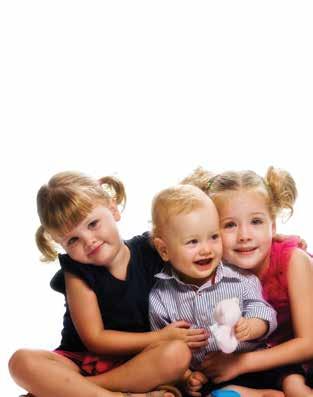
We are working with Aboriginal communities, health, justice and education professions to change the way FASD is diagnosed and treated in the clinic through upskilling midwives and the development of screening and therapeutic tools. Our work in the Kimberly has been strengthened through an invitation from local community elders to partner with them in developing, implementing and evaluating a comprehensive prevention strategy in the Fitzroy Valley.
We have conducted a study looking at FASD and the knowledge, attitudes and practice in the Western Australian justice system. This has guided new projects looking at the underlying reasons for the behaviour that has brought the child or young person into contact with the justice system; the development of a screening tool for use in the juvenile justice system; appropriate services, supports and management strategies to reduce the likelihood of reoffending; and resources for justice professionals to increase their understanding of FASD.
The ORIGINS Project
We believe everyone deserves a healthy start to life. The ORIGINS Project is a collaborative initiative to establish a new WA birth cohort that is fully integrated with clinical and diagnostic services. We have partnered with clinicians, hospitals and diagnostic services to develop a new research platform; an approach that will provide a model for other health service centres and improve outcomes for the kids of WA.
Early screening and identification of children at risk support clinicians to act earlier and ensure we give kids the best chance to thrive. Our work is grounded in making meaningful changes in policy and practice that will reduce the burden of common health conditions through early interventions. Our interventions will be focused on improving modifiable aspects of the early life environment, such as nutrition, physical activity, time spent indoors and outdoors, smoking and pollutants, microbial diversity, water, air and food quality.
OUR GOAL
To reduce the rising epidemic of noncommunicable diseases such as obesity, heart disease, allergies and poor mental healththrough a healthy start to life
WHO WE ARE AND WHAT WE DO
INSTITUTE LEADERSHIP TEAM
HEAD OF ABORIGINAL RESEARCH DEVELOPMENT
Glenn Pearson
BOARD
DIRECTOR
Jonathan Carapetis
DEPUTY DIRECTOR & ASSOCIATE DIRECTOR (RESEARCH)
Graham Hall
ASSOCIATE DIRECTOR (RESEARCH)
Stephen Stick
RESEARCH FOCUS AREAS
ASSOCIATE DIRECTOR (RESEARCH)
Susan Prescott
ABORIGINAL HEALTH
Co-facilitators:
Glenn Pearson
Tom Snelling
BRAIN & BEHAVIOUR
Co-facilitators:
Graham Hall
Donna Cross
CHRONIC DISEASES
Co-facilitators:
Stephen Stick
Elizabeth Davis
SHOWCASE PROGRAMS
AREST CF
EARLY
ENVIRONMENT
Co-facilitators:
Susan Prescott
Karen Edmond
D-Light Diabetes
FASD Children’s Cancer
The ORIGINS Project
16 | TELETHON KIDS INSTITUTE
ASSOCIATE DIRECTOR (RESEARCH)


Paul Watt
TOTAL Students 96 TOTAL Staff 424
as
2014
EXPERTISE AND TECHNOLOGIES
Paul Watt
CHIEF OPERATING OFFICER
Nick Northcott
DIRECTOR OF COMMUNICATIONS & DEVELOPMENT
Elizabeth Chester
COMPANY SECRETARY & HEAD OF RISK & COMPLIANCE
INSTITUTE MANAGEMENT TEAM Chair: Chief Operating Officer
Business Improvement & Analysis
Communications
Development
Finance & Procurement
Information Technology
People & Culture
Research Development
Risk & Compliance
Scientific Services
PEOPLE STRATEGY TEAM
Deputy Director
Chief Operating Officer
People Leaders (Kim Carter, Glenn Pearson, Prue Hart, Kristy Le May, Francis Mitrou)
People & Culture
ANNUAL REPORT 2014 | 17
As at May 2015
Kristy Le May at 31 December
66.6%
33.4%

INTERNATIONAL COMPETITIVE GRANTS $1,282,742 OTHER COMPETITIVE GRANTS $466,265 GOVERNMENT CONTRACTS $7,514,691 COMMERCIAL INCOME $4,166,652 OTHER GRANTS $6,408,910 MISCELLANEOUS INCOME $744,792 DONATIONS, FUNDRAISING, BEQUESTS AND SPONSORSHIP $16,351,624 INVESTMENT INCOME $2,628,749 RESEARCH SUPPORT $2,888,319
RESEARCH SUPPORT & OPERATIONS $15,407,833 SCIENTIFIC RESEARCH $30,697,901 31.9 % AUSTRALIAN COMPETITIVE GRANTS $8,830,858 17.2% 14.7% 12.5% 8.1% 5.6% 5.1% 2.5% 1.5% 0.9%
FINANCIALS INCOME
EXPENSES
RESEARCH INCOME

Australian Competitive Grants Australian Research Council 321,745 Juvenile Diabetes Research Foundation 14,975 National Health and Medical Research Council 8,485,165 National Heart Foundation Australia 8,973 8,830,858 International Competitive Grants Cystic Fibrosis Foundation Therapeutics 556,363 International Rett Syndrome Association 5,053 Juvenile Diabetes Research Foundation Int 22,485 Miscellaneous - Overseas Grant 2,079 National Institute of Health 696,762 1,282,742 Other Competitive Grants Asthma Foundation of WA 24,933 Cancer Council of WA 8,002 Brightspark Foundation 203,117 Foundation for Alcohol Research and Education 960 Healthway 206,727 Melbourne Health 22,526 466,265 Government Contracts Western Australia Department of Health 3,146,775 Department of Aboriginal Affairs 200,000 Disability Services Commission 167,467 Office of Science and Innovation 3,504 Pathwest Laboratory Medicine WA 15,686 Department of Premier and Cabinet 5,000 Department of the Attorney General WA 31,421 Federal Government Cancer Australia 63,800 Department of Education, Employment and Workplace Relations 510,807 Department of Education 1,109,750 Department of Health & Ageing 1,915,394 Department of Education & Training 14,669 Department of the Prime Minister and Cabinet 95,304 Other Dept for Education & Child Development, SA 235,114 7, 514,691 Commercial Income Market Solutions 13,636 Joondalup Health Campus 100,000 Sun Biomedical Limited 86,668 inVentiv Health Clinical Pty. Ltd. 10,160 Vertex Pharmaceuticals (Switzerland) Sarl 54,351 Miscellaneous - Overseas Commercial 8,231 GlaxoSmithKline Australia Pty Ltd 36,726 Glaxosmithkline Biologicals SA 9,320 Miscellaneous - Australian Commercial 34,571 Novartis Vaccines and Diagnostics Pty Ltd 65,109 Novo Nordisk Pharmaceuticals Pty Ltd 95,192 OM Pharma 73,362 Pfizer Pty Ltd 40,299 Phylogica Ltd 3,402,672 Ondek Pty Ltd 41,002 Novotech (Australia) Pty Ltd 83,510 Woodside 11,843 4,166,652 Other Grants Australian Paediatric Surveillance Unit (APSU) 73,829 Confederation of Meningitis Organisations 83,268 Curtin University of Technology 30,250 Edith Cowan University 64,503 Friends of the Institute 156,668 Miscellaneous Income - Other Grants 13,324 Murdoch Childrens Research Institute 39,136 Murdoch University 6,829 Princess Margaret Hospital 719,167 Ruah Community Services 148,953 Thoracic Society of Australia & New Zealand 1,013 University of Cambridge 1,000 University of Queensland 10,000 University of Sydney 46,485 University of Western Australia 3,864,047 World Heart Federation 37,999 Uniting Care Children Young People and Families 10,000 Menzies School of Child Health Research 10,000 Autism West Support Inc 33,785 Tasmanian Early Years Foundation 125,000 Lung Institute of Western Australia 6,808 University of Melbourne 6,100 Western Sydney Sexual Health Centre 17,000 Harry Perkins Institute 75,000 WA Nurses Memorial Charitable Trust 20,000 Multiple Sclerosis Australia 7,500 SIDS Council of WA 44,000 Minderoo Foundation 19,800 Autism CRC Ltd 74,653 Fiona Wood Foundation 31,629 Medibank Health Research Fund 43,303 Playgroup Australia Limited 51,552 Society for Paediatric Anaesthesia in NZ & Aus 15,000 Cerebral Palsy Alliance 10,000 University of New South Wales 28,959 University of Notre Dame 2,500 Monash University 163,750 Medtronic Foundation 316,100 6,408,910 Miscellaneous Income 744,792 TOTAL RESEARCH INCOME $29,414,910
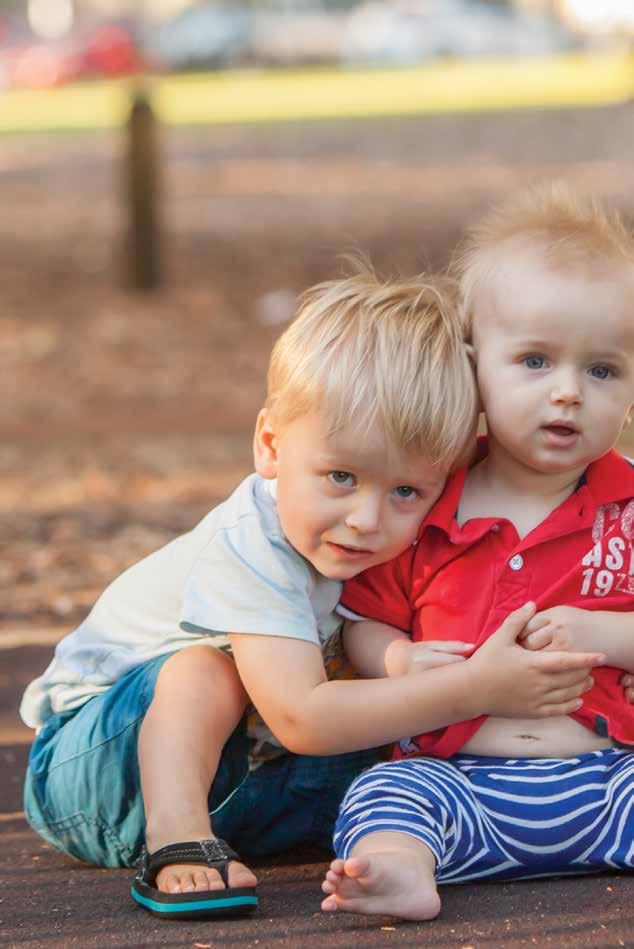
are at the of everything we do
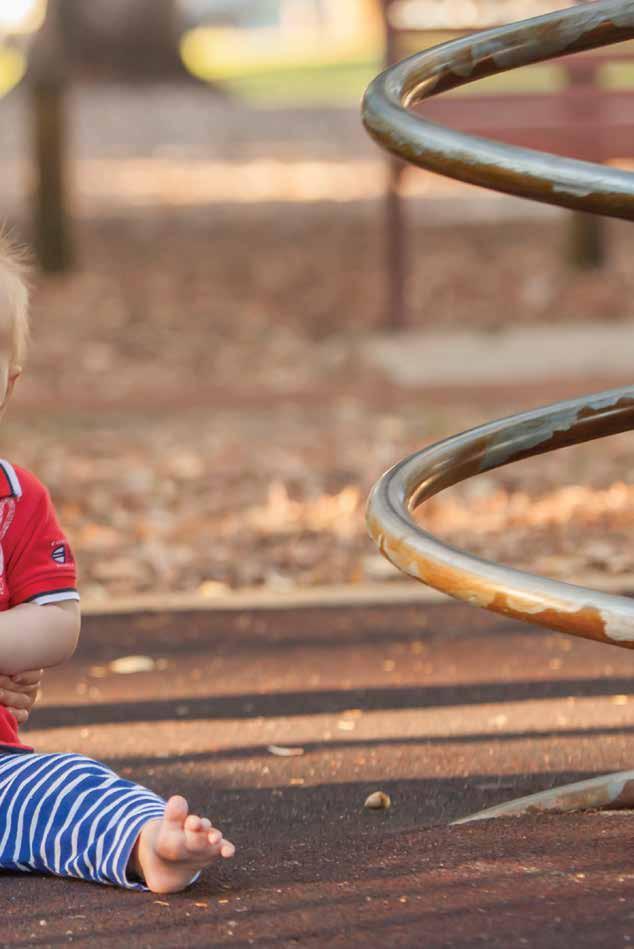
For further information about donating to the Telethon Kids Institute, subscribing to our mailing list or joining us for a tour of our facilities please contact us on: T | 08 9489 7777 E | contact@telethonkids.org.au W | telethonkids.org.au
100 Roberts Road, Subiaco Western Australia 6008 PO Box 855, West Perth Western Australia 6872
T | 08 9489 7777
E | contact@telethonkids.org.au
W | telethonkids.org.au
PRINCIPAL PARTNER STRATEGIC PARTNER





















































 DIRECTOR
DIRECTOR



















